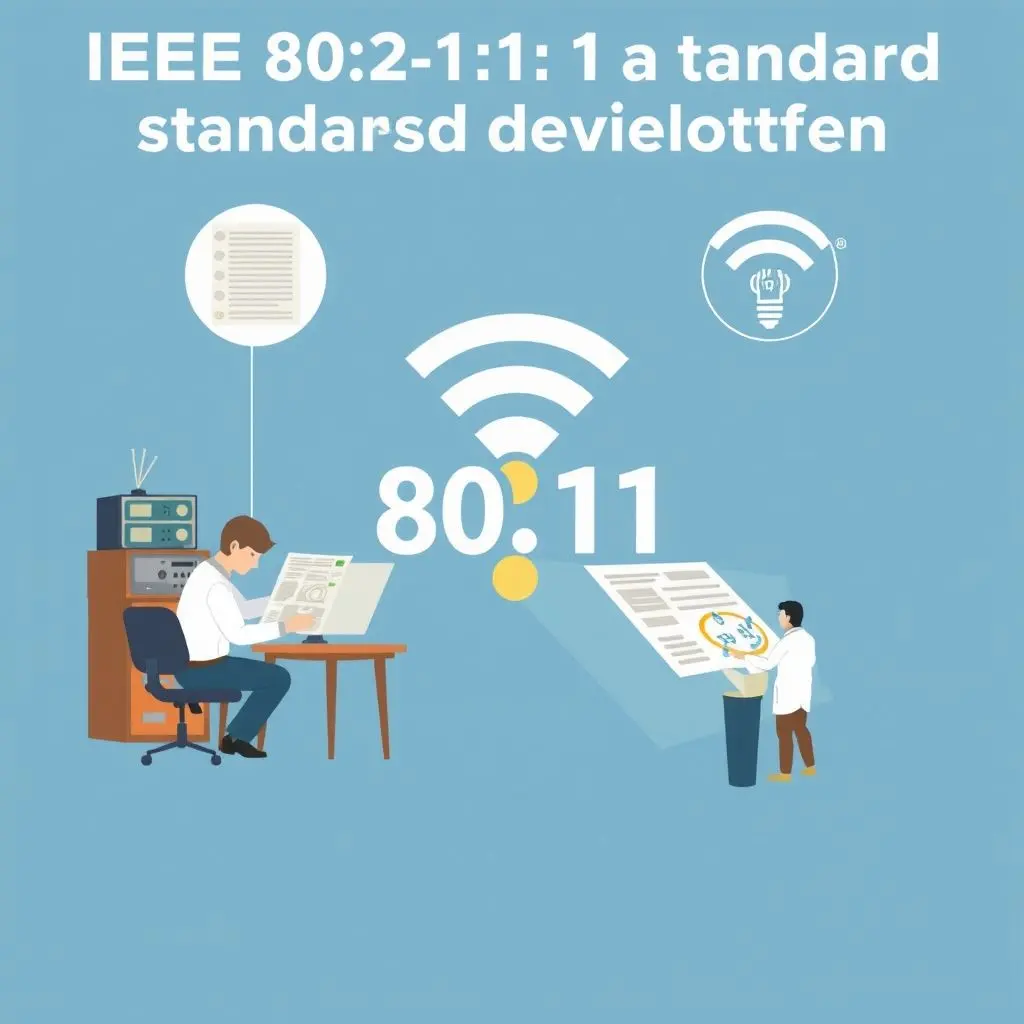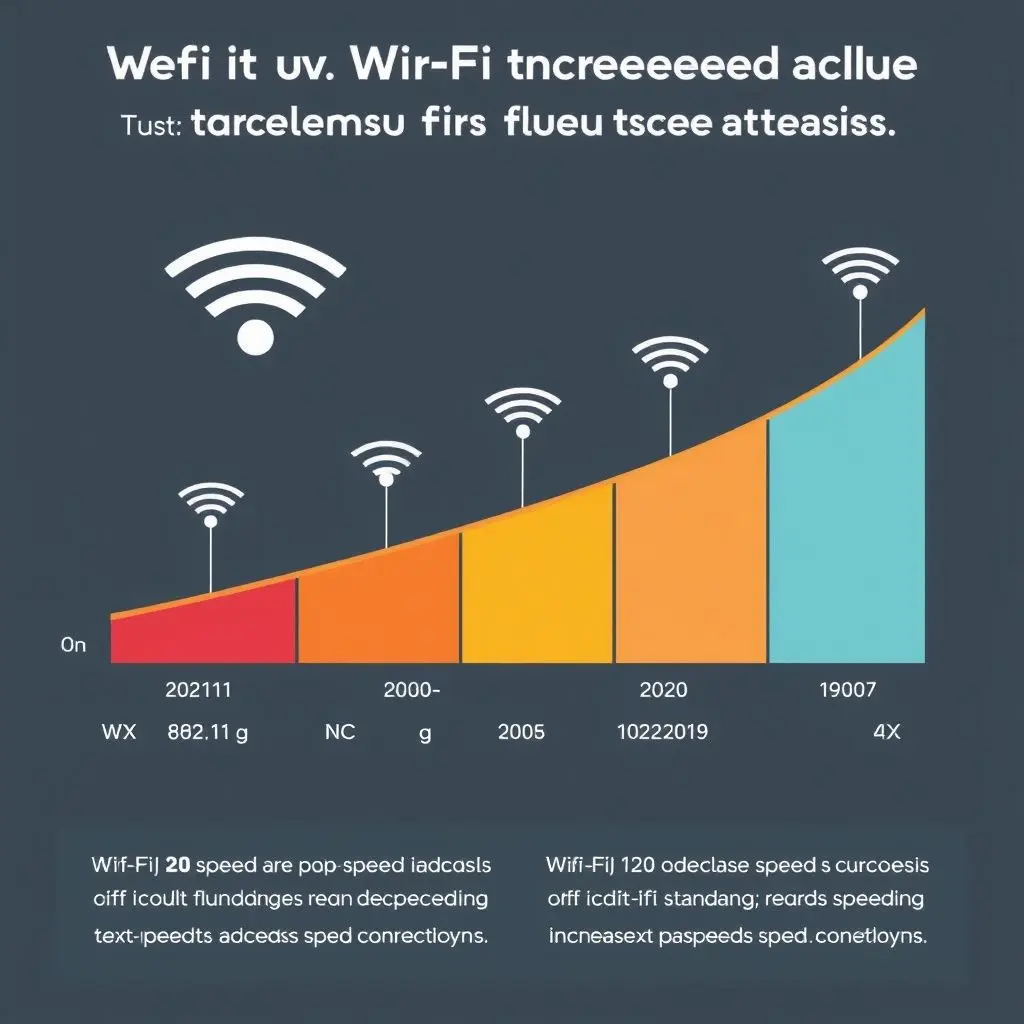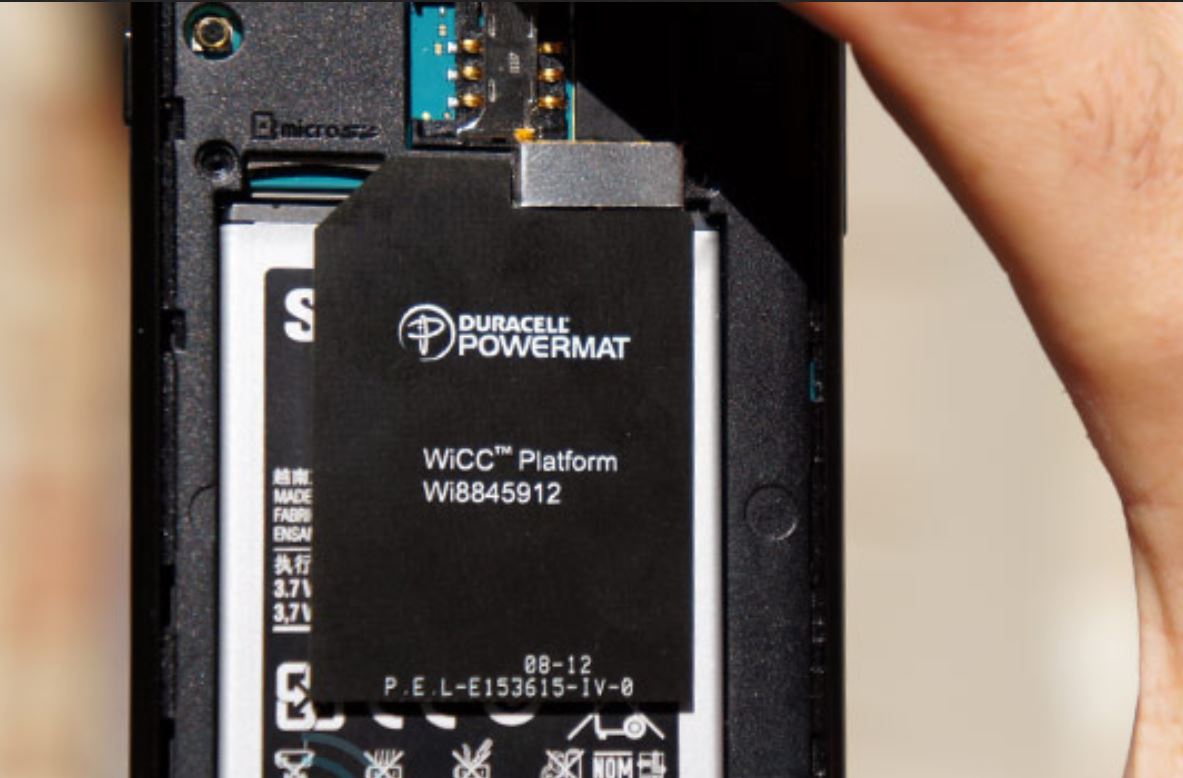Ever connect your phone or laptop to the internet without plugging in a single wire and just take it for granted? That invisible link, the magic we call Wi-Fi, seems like it’s always been there. But its origin story is far wilder and more unexpected than you might imagine, tracing back to wartime secrets, ingenious minds, and a splash of Hollywood glamour.
Forget boring tech labs for a moment. The fundamental concept that powers Wi-Fi has roots in a technique developed during World War II, designed not for streaming videos or checking social media, but to prevent adversaries from jamming radio-guided torpedoes. Seriously!
Before we plunge headfirst into the fascinating details, sometimes a quick visual recap helps solidify the story. Here’s a little something we put together that hits the high points:
Okay, now that your brain’s bandwidth has had a little warm-up, let’s get into the nitty-gritty of how we got from that clever wartime idea to the ubiquitous wireless networks that connect almost everything in our lives today.
Table of Contents
The Unlikely Duo: Hollywood and the Pianist
The story begins, believe it or not, with actress Hedy Lamarr, known for her beauty and film roles, and composer George Antheil. While Lamarr was famous on screen, she was also a keen inventor off-screen. During WWII, concerned about the war effort, she and Antheil collaborated on an idea to prevent enemy forces from jamming radio signals used to control torpedoes. Their invention? A ‘Secret Communication System’.
This system used a technique called frequency hopping. Imagine sending a message across radio waves, but instead of staying on one frequency (channel), you rapidly jump between many different frequencies in a sequence known only to the transmitter and receiver. If an enemy tried to jam the signal by broadcasting noise on one frequency, the signal would only be on that frequency for a fraction of a second before hopping to another, making it incredibly difficult to block entirely.
They patented this idea in 1942. While it wasn’t immediately implemented widely for torpedo guidance due to practical complexities at the time, the core concept of frequency hopping spread spectrum technology was revolutionary. It laid the theoretical groundwork for resilient, secure wireless communication.

From Military Secret to Civilian Use
After the war, the concept of spread spectrum technology continued to evolve, largely within military and government applications. It offered significant advantages in terms of security and resistance to interference. However, for commercial use, it was initially restricted.
A crucial step towards civilian wireless networking came in the late 1980s. The U.S. Federal Communications Commission (FCC) opened up certain radio frequency bands (like 2.4 GHz and 5 GHz) for unlicensed use, provided devices operating in these bands used spread spectrum technology. This was a game-changer, allowing companies to develop wireless products without needing expensive individual spectrum licenses.
Several companies began developing wireless local area networks (WLANs) during this time, but they used proprietary technologies that couldn’t talk to each other. This lack of interoperability was a major barrier to widespread adoption.
The Dawn of Standardization: IEEE 802.11
Recognizing the need for a universal standard, the Institute of Electrical and Electronics Engineers (IEEE) established the 802.11 working group in 1990. Their mission was to create a standard for wireless local area networks.
After several years of development, the first version of the 802.11 standard was released in 1997. It defined the basic mechanisms for wireless communication between devices. However, this initial standard was quite slow by today’s standards, offering maximum data rates of only 1 or 2 megabits per second (Mbps).
Think about that: trying to load a modern webpage or stream a video at 2 Mbps! It was a start, but clearly needed improvement to become practical for mass consumer use.

Enter the ‘Wi-Fi’ Name and the Alliance
Even with the standard in place, there was still the issue of ensuring different manufacturers’ devices could actually work together. This led to the formation of the Wireless Ethernet Compatibility Alliance (WECA) in 1999, later renamed the Wi-Fi Alliance.
Their primary role is to certify products that comply with the IEEE 802.11 standards, ensuring interoperability. If a product has the ‘Wi-Fi Certified’ logo, you know it should work seamlessly with other certified products.
Interestingly, the term ‘Wi-Fi’ wasn’t part of the technical standard itself. WECA hired the marketing firm Interbrand to come up with a catchy name. Interbrand created ‘Wi-Fi’, and initially used the slogan ‘The Standard for Wireless Fidelity’. While the Alliance later dropped the slogan and insists ‘Wi-Fi’ is just a name, the initial marketing link to ‘Wireless Fidelity’ stuck in the public consciousness. So, it’s not actually short for anything technical, but purely a marketing triumph!

The Speed Race: Evolution of the Standards
The real explosion in Wi-Fi’s popularity came with subsequent amendments to the 802.11 standard, dramatically increasing speeds and improving performance:
- 802.11b (1999): This was the game-changer for consumers. Operating in the 2.4 GHz band, it boosted speeds up to 11 Mbps, making wireless internet finally practical for homes and businesses.
- 802.11a (1999): Released around the same time, this standard operated in the 5 GHz band and offered much faster speeds, up to 54 Mbps. However, it had a shorter range and was initially more expensive, leading to 802.11b becoming more popular early on.
- 802.11g (2003): Bridged the gap by operating in the 2.4 GHz band (like ‘b’) but offering speeds up to 54 Mbps (like ‘a’). This became the dominant standard for several years.
- 802.11n (Wi-Fi 4, 2009): A major leap forward, introducing technologies like MIMO (Multiple Input, Multiple Output) which uses multiple antennas to send and receive data simultaneously. This significantly increased throughput, offering speeds potentially reaching hundreds of Mbps.
- 802.11ac (Wi-Fi 5, 2013): Focused primarily on the 5 GHz band, further enhancing speeds through wider channels and more advanced MIMO techniques, reaching speeds into the gigabits per second range.
- 802.11ax (Wi-Fi 6, 2019): Designed for congested environments and multiple connected devices, improving efficiency and speed, particularly in scenarios with many users. Introduced OFDMA (Orthogonal Frequency-Division Multiple Access) for better multi-user handling.
- 802.11be (Wi-Fi 7, developing): The latest standard promising even greater speeds, lower latency, and improved reliability, leveraging the 6 GHz band more extensively.
Each new standard built upon the last, pushing the boundaries of speed, range, and capacity, enabling everything from seamless streaming and online gaming to powering smart homes and complex business networks.

Transforming the Connected World
From that initial flicker of an idea to prevent torpedo jamming, Wi-Fi has become the invisible backbone of our digital lives. It has fundamentally reshaped how we work, communicate, learn, and entertain ourselves.
Businesses rely on it for internal operations and customer connectivity. Public spaces, cafes, airports, and cities offer Wi-Fi access, turning them into hubs of activity. Our homes are filled with Wi-Fi connected devices, from smart speakers and thermostats to security cameras and light bulbs.
It cut the cord, quite literally, freeing devices from physical network connections and allowing for unprecedented mobility and flexibility in how we interact with technology and information.

Frequently Asked Questions About Wi-Fi’s Past
Is Wi-Fi actually short for Wireless Fidelity?
No, officially it is not. While the term ‘Wireless Fidelity’ was used in early marketing slogans by the Wi-Fi Alliance, they later clarified that ‘Wi-Fi’ is simply a brand name, like ‘Kleenex’ or ‘Kodak’.
How did Hedy Lamarr contribute to Wi-Fi?
Hedy Lamarr, along with George Antheil, patented a frequency hopping spread spectrum system during World War II. This core concept of rapidly switching frequencies to make communication more robust against jamming is a foundational principle used in modern wireless technologies, including Wi-Fi.
What was the first widely adopted Wi-Fi standard?
While 802.11 was the first standard released, 802.11b (released in 1999) was the first version that achieved widespread consumer adoption due to its increased speed (11 Mbps) and lower cost compared to the simultaneous 802.11a standard.
What is the role of the Wi-Fi Alliance?
The Wi-Fi Alliance is a global network of companies that promotes Wi-Fi technology and certifies products for interoperability based on the IEEE 802.11 standards. Their certification ensures that devices from different manufacturers work together seamlessly.
How has Wi-Fi speed increased over time?
Initial Wi-Fi speeds were 1-2 Mbps (802.11). 802.11b reached 11 Mbps, 802.11g and 802.11a reached 54 Mbps. 802.11n (Wi-Fi 4) introduced speeds up to hundreds of Mbps, 802.11ac (Wi-Fi 5) pushed into gigabits per second, and the latest standards like 802.11ax (Wi-Fi 6) offer further improvements in speed and efficiency, particularly in busy environments.
More Than Just a Connection
Reflecting on the history of Wi-Fi, it’s clear this isn’t just a story about a piece of technology. It’s a narrative woven from unexpected invention, military needs, regulatory decisions, relentless engineering, clever marketing, and global collaboration. From a way to guide torpedoes without interference to the invisible web that connects our smart homes, mobile devices, and businesses, Wi-Fi’s evolution has been nothing short of transformative.
It reminds us that innovation can spring from the most surprising places and that the collaboration between diverse minds, like a Hollywood actress and a composer, can lay the groundwork for technologies that change the world in profound ways.





